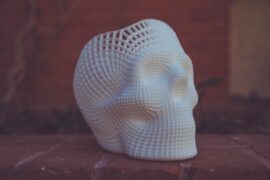
One word for ya. Rowdiness. The boy has spun out a doctoral paper featuring new scanning technology he’s named ProFORMA. He explains it as ‘On-line Rapid Model Acquisition’, but we all know those are just fancy words for what we all lovingly know as… 3D SCANNING. How does it work? Take a look.
ProFORMA, a system designed to enable on-line reconstruction of textured 3D objects rotated by a user’s hand. Partial models are created very rapidly and displayed to the user to aid view planning, as well as used by the system to robustly track the object pose. The system works by calculating the Delaunay tetrahedralisation of a point cloud obtained from on-line structure from motion estimation which is then carved using a recursive and probabilistic algorithm to rapidly obtain the surface mesh.
Yeah, you thought that was the way to go about it all, but while you were reading SolidSmack, Qi Pan was busy putting recursive algorithms to work. The modeling process goes something like this.

Here’s the video.
That’s a lot of Delaunies. Simply astounding.
More 3D for Product Development?
This is the tech 3D dreams are made of. Suddenly, the ability to get real-time 3D data into your models (via a dirt-cheap peripheral) doesn’t seem so odd. As long as the mesh can be converted into a readable format, we should be able to soak in the reality of quickly rendered scans. With the speed at which Qi is showing this happen, you’ll have reference data inside your model in minutes.
This puts 3D back on the hardware side of design and that is interesting in light of where 3D is (feasibly) heading with touch and mobile devices. How about a mobile app that scans 3D and sync directly to your database/model/part library? Now we just have to wait to see which CAD company is gonna jump on this tech first.
Get the poster and more videos here.



